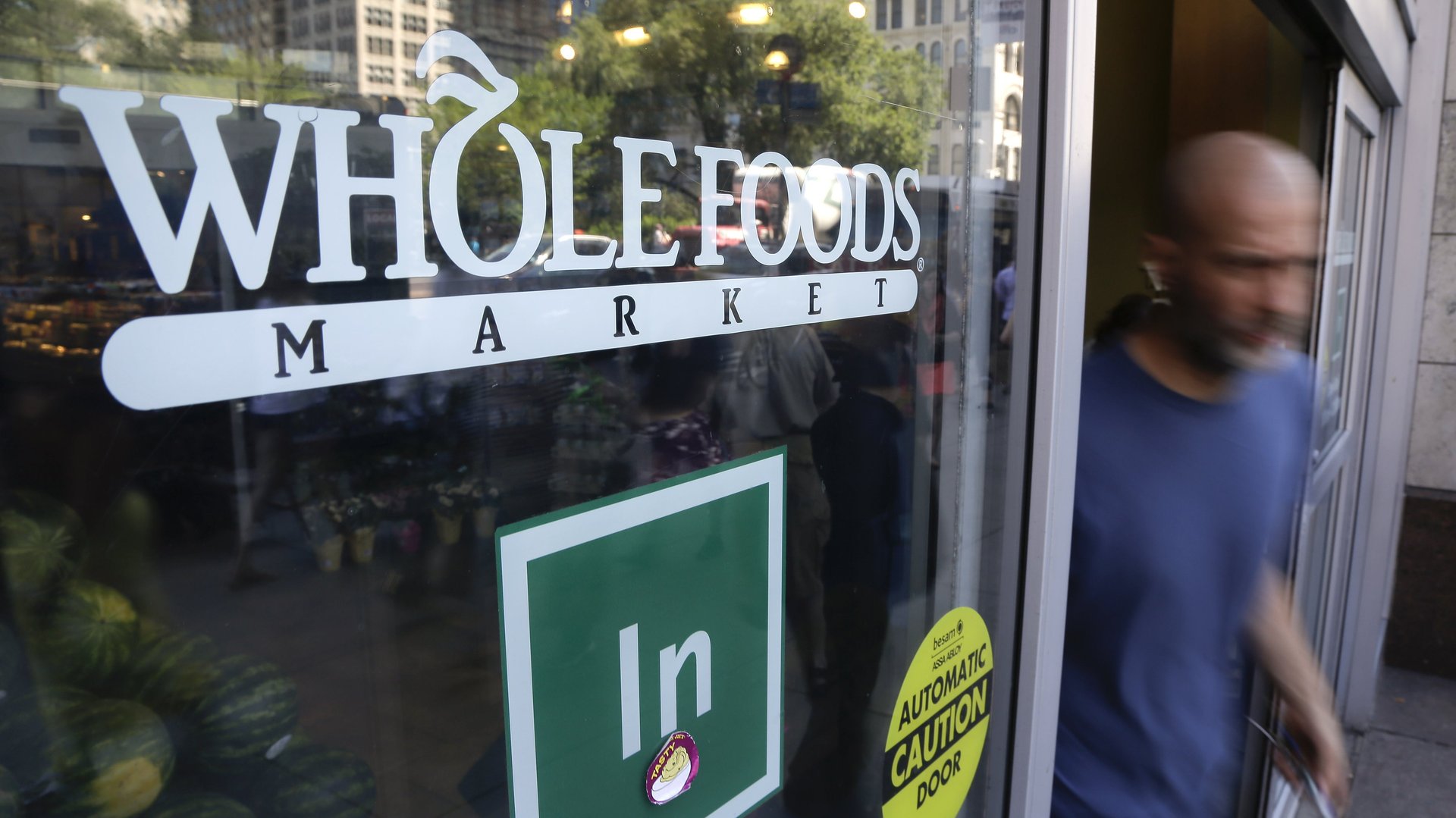The only foods worth buying at Whole Foods
If you’re looking for a bargain at Whole Foods Market, best to stick with dairy, meats, and seafood.


If you’re looking for a bargain at Whole Foods Market, best to stick with dairy, meats, and seafood.
That’s what an Aug. 3 report by Credit Suisse shows. To get an idea of how the upscale grocer’s prices compare to other supermarkets, analysts at the investment bank traveled to Chicago, Indianapolis, and Louisville, Kentucky, to go shopping. They visited Whole Foods and several conventional and specialty grocery stores. The upshot: Whole Foods still has a lot of work to do if it wants to shed the “Whole Paycheck” association consumers have come to attach to the chain. But there are some bright spots.
Whole Foods disrupted global food manufacturers by showing that consumers want—and are willing to pay for—more healthful options. It had a good head start, but regional grocery chains fought back, and they were able to bulk up their organic options faster than Whole Foods anticipated.
It makes sense that the price gap for dairy items remains relatively slim. For starters, the yogurt wars are in full-swing, as numerous brands have crowded into the dairy aisle at almost all US supermarkets. Also milk prices in 2016 have hovered at the lowest levels the dairy industry has seen in more than five years.
The data on meat, poultry, and seafood is more surprising, especially since Whole Foods has long claimed its meat is superior. In late 2015, media reports showed salmon at the high-end supermarket, obtained from a Whole Foods in Virginia, was about twice as expensive as salmon at a nearby Kroger.
The smaller price gaps observed by Credit Suisse could be explained in three ways:
- Whole Foods drastically lowered the prices of its meat, poultry, and seafood.
- The Credit Suisse data isn’t granular enough to give us a true picture. Seafood may still remain higher, but because it’s lumped with beef and poultry the average was dragged down.
- The beef and poultry price gap might be lower because the analysts shopped in the Midwest and upper South, where proximity to feedstock and farming operations gave conventional stores in that geographic region easier access to organic, locally grown, high-end meats.
Regardless, the analysts determined that some of Whole Foods’ larger price gaps are justified.
“We came away from our store visits concluding that Whole Foods offers a better overall shopping experience,” the analysts wrote. “The ‘acceptable’ level will vary by consumer and [be] determined by how they weigh convenience, value, and quality, and by purchase occasion or type of trip.”
Even if there is some justification, Whole Foods is working hard to appeal to everyday shoppers. In a July 27 earnings call with investors, the supermarket’s executives reported the number of carts going through checkout lines isn’t increasing, but the number of items in each cart is on the rise. That means consumers are responding to lower prices and promotions, but the company isn’t communicating well enough with the public to lure more people through the doors.
“The crossover consumer has stopped going to Whole Foods,” said Matt Argersinger, an analyst at The Motley Fool. “The person who wants to buy a bottle of Coke but also a package of granola, they aren’t going to Whole Foods.”